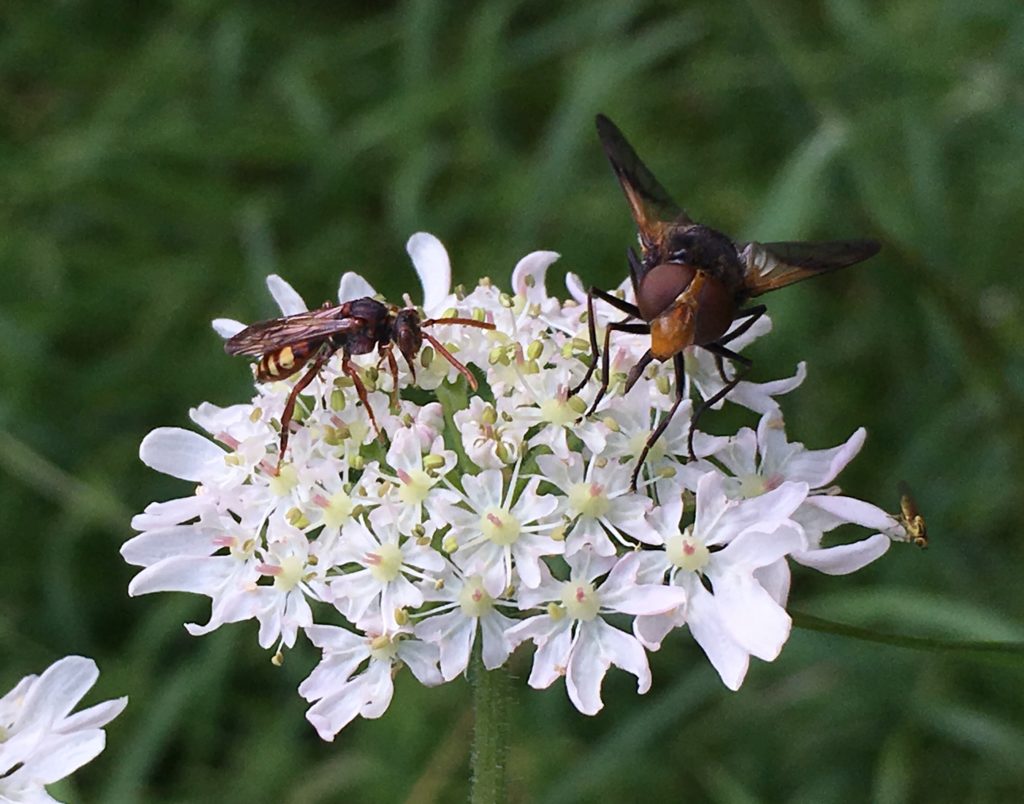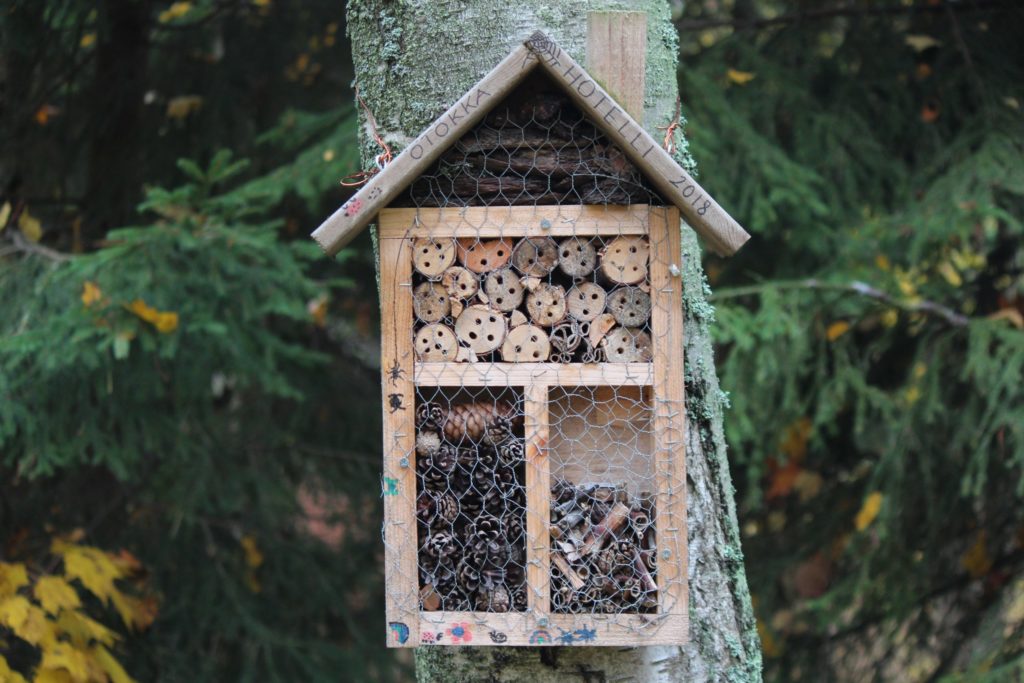Pollinators: our struggling superheroes!

Although honeybees get most of the attention, more than 1,500 different insect species are pollinating plants in the UK. Bumblebees, wasps, butterflies, moths, and beetles all contribute to this vitally important process.
Did you know? 35% of the world’s crop production depends on insects for pollination.
One third of the food we eat, including fruit, vegetables, chocolate, coffee, nuts, and spices, is created with the help of pollinators. Without the service that nature provides, some of that food would become a lot harder to grow and more expensive.
Worryingly, insect pollinator species are in dramatic decline as biodiversity loss around the planet accelerates. Climate change, habitat destruction and degradation due to urbanisation and agriculture, and even light pollution (affecting night-time pollinators), are all having an impact.
How we help
On the land that Earth Trust cares for, our management techniques ensure that bees, butterflies and other wild pollinators can find plenty of food, nesting and overwintering sites, and good shelter enabling them to travel safely to forage.
We do this on our farmland by planting a variety of crops, maintaining wide wildflower field margins, using grazing cattle to manage our meadows, and minimising use of pesticides on our crops.
At our heritage sites and community reserves, we create hedgerow and woodland habitats for pollinators making sure there are wildflowers to provide the pollen and nectar they need for food, and habitat features which provide the nesting sites and shelter they need to survive.
Pollinators, quite simply, need more plants in our gardens, balconies, allotments, farms, and in the landscape around our homes and across our towns and cities.
5 simple things to do at home
1. Grow pollinator-friendly plants in your garden or on your windowsill.
Flowers, shrubs and trees provide much needed nectar and pollen as food for hungry bees and other pollinators throughout the year. Pussy willow, primroses and crocuses in spring, lavenders, meadow cranesbill and ox-eye daisies in summer, ivy and hebes in autumn, and mahonia shrubs and cyclamen in winter. Some easy-to -grow (stick them in a pot and let nature do its work!) options for your window box or patio pot are Alliums and Chives, Rosemary, Thyme and Geraniums. Make sure they’re well watered, as thirsty plants won’t produce nectar.
2. Let your garden grow a little wilder.
Cut your grass less often and, ideally, leave a patch to grow wild with plants like stinging nettles clover and dandelions. These wild flowers and additional leaves will provide food sources for caterpillars and breeding places for butterflies and moths. You’ll make a big difference to our pollinators, with zero effort!
3. Try not to disturb insect nests and hibernation spots.
As well as making sure there’s enough food throughout the year for insect pollinators, it’s also important to make sure they can nest in safety. They, and the next generation, need to survive over winter, to start pollinating again the following spring.
4. Avoid using pesticides.
Think carefully about using chemicals especially where pollinators are active or nesting, or where plants are in flower. Consider physically removing pests or using barriers to deter them instead. Only use pesticides if absolutely necessary, and always follow the label instructions.
5. Build a home for solitary bees.
Solitary bees aren’t like honeybees that live in hives. As their name suggests, they make their nests on their own and lay their eggs in tunnels, such as in dead wood or hard soil. A bee hotel mimics these conditions. The RSPB have a useful video guide showing how to make a 5-star bee hotel. The Bumblebee Conservation Trust also provide step-by-step instructions on how to make your own nest spot out of a flower pot! And Eco Attractions’ ‘Project Pollinate‘ fun guide has some top tips and resource ideas so you can help pollinators find safe places to nest, feed and drink all year round.

We can all support our superheroes!
Find out more about the Bumblebee Conservation Trust ‘Bee the change’ campaign and how your local area can become more bumblebee friendly.
Read more about the ways Earth Trust Farm is providing for pollinators.
-
Fields full of life – nature and food working together
Earth Trust is making big changes in two of its fields to show how nature and food can thrive together. -
Creating a new Gateway to Nature
In this blog CEO Ian Barrett introduces our plans for a new Gateway to Nature - providing better infrastructure to connect more people with the natural world. -
A recap of our Supporters’ Celebration 2025
Supporters' Day was an important opportunity to recognise and celebrate our wonderful community, and all the many different ways that we work together.